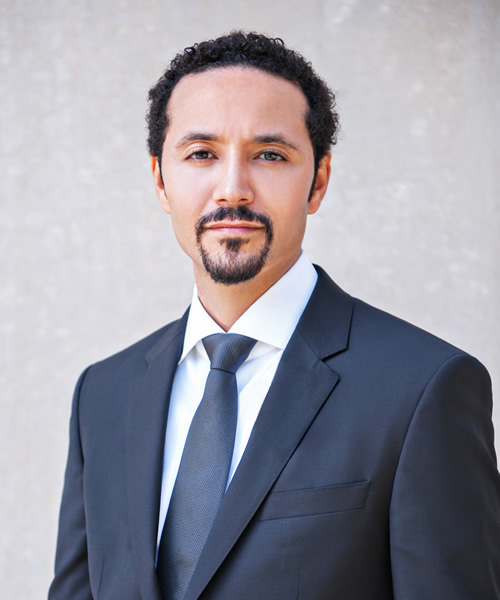Based on empirical data, scholars have long believed that black Protestants of different denominations have more in common with one another than they do with white Christians of the same denomination. Due to this feature of American Christianity, sociologists have often grouped all black Protestants together. While useful for identifying differences between black and white Christians, the practice of lumping black Protestants together has the disadvantage of obscuring diversity among black Christians. Although research on the impact of race on the experience and attitudes of black and white Christians is indispensable, focus on diversity within black Christianity is essential to obtaining a nuanced understanding of black religion. Therefore, although I am a legal scholar and not a sociologist, I am delighted that social scientists are developing new coding schemes that refine the study of similarities and differences among black Christians.
As a legal scholar working at the intersection of race, law, and religion, I am not in a position to comment on the technical advantages or limitations of existing typologies or coding schemes. Although I will not comment on the technical dimensions of current typologies, the effort to refine the empirical study of black Christianity to develop a greater understanding of the diversity within it has the potential to yield invaluable data for legal scholars. Moreover, as a black seminary graduate and as a practicing Christian, I believe that increasing our understanding of diversity within the black Christian tradition can assist people of faith who wish to break down barriers between coreligionists.
In 2014, I published the article “How Critical Race Theory Marginalizes African American Tradition,” which attempts to explain the neglect of the African-American Christian tradition in race and law scholarship. In particular, I attempt to explain the marginal role of Christianity in race and law scholarship in light of both race and law scholarship’s commitment to rooting itself in the perspectives of people of color and the Black Church’s central role in the lives of many black people. I also urge the development of a body of race and law scholarship that draws on the black Christian tradition as a critically important source of normative meaning for the African-American community. In urging the development of such a literature, I specifically note that black Christians have disagreed on a range of issues, including, among other things, the moral status of nonviolence, the desirability of integration, whether to conform to consumer culture, and whether abortion should be legal. In light of such disagreement among black Christians, I note that because religious sensibilities can lead to differing normative positions, “the political implications of developing a more robust literature examining” questions of race and law from the perspective of the black Christian tradition are unclear and that gaining greater clarity is one reason to develop a body of scholarship on race, law, and black Christianity.
Jason Shelton and Ryon Cobb’s recently proposed coding scheme, black reltrad, refines the ability of researchers to capture differences and similarities between black Protestant denominations on a range of issues, including abortion, same-sex marriage, and affirmative action. Because understanding diversity within black Christianity is essential to producing scholarship that can approximate the lived reality of black Christian life, I view the introduction of black reltrad as invaluable for developing a body of scholarship on law and the African-American Christian tradition. I hope researchers will soon expand on Shelton and Cobb’s work. In addition to the areas for future study that Shelton and Cobb identify, such as exploring the impact of denominational affiliation on support for gay marriage and government programs aimed at assisting the poor, there are other areas to which I hope scholars will apply black reltrad. Two such areas include the consequences of denominational differences on attitudes toward transgender rights and issues related to the separation of church and state, including vouchers for religious schools, religious displays on public land, the role of religion in politics, and religious exemptions to anti-discrimination law.
I also believe additional data on diversity within the black Christian tradition can facilitate the breaking down of barriers between blacks of different denominations and between black and nonblack coreligionists. In my view, by providing greater insight into similarities and differences, such data could facilitate interdenominational work between black Christians of different denominations and help primarily nonblack congregations that hope to increase their racial diversity. Although church leaders and clergy—especially black church leaders and clergy—may already possess insight into differences between black Christian denominations, leaders of primarily nonblack churches who wish to increase their congregations’ racial diversity also benefit from empirical studies of similarities and differences among black Christians. More specifically, with greater knowledge of black Christianity, it may be easier to attract and maintain racially diverse congregations. As a result, empirical studies that further our understanding of differences within black Christian life can aid efforts to address Martin Luther King, Jr.’s still relevant and prophetic critique of the racially homogenous character of American church life.
1. Kevin D. Dougherty & Michael O. Emerson, “The Changing Complexion of American Congregations,” Journal for the Scientific Study of Religion, 24, 29 (2018): “estimat[ing] that multiracial congregations constituted 6.4 percent of all U.S congregation in 1998, 7.8 percent in 2006, and 12.0 percent in 2012.” Dougherty and Emerson also note that among Protestant churches in particular, the percentage of multiracial congregations increased from 3.7 percent in 1998 to 6.9 percent in 2006 to 12 percent in 2012.

